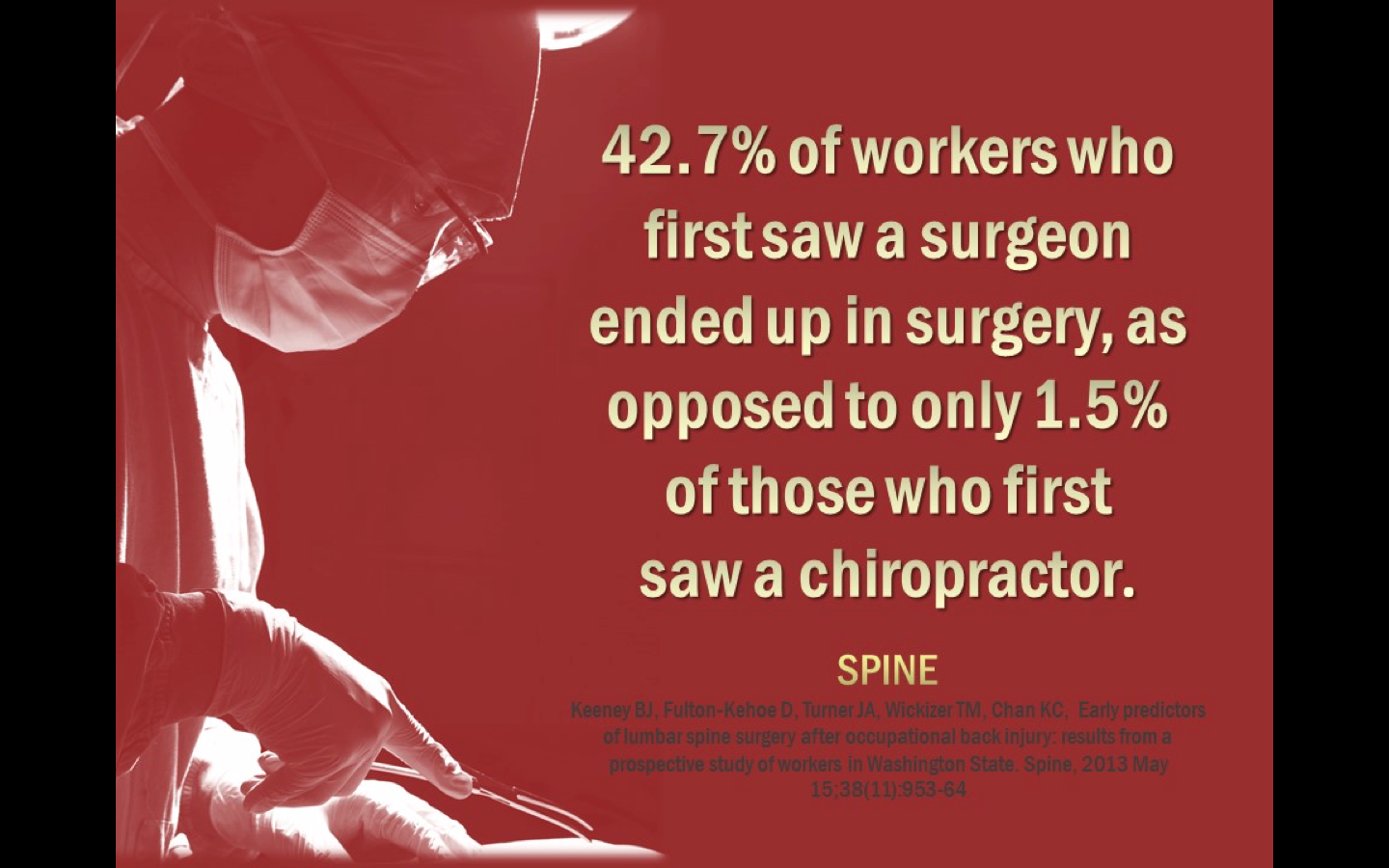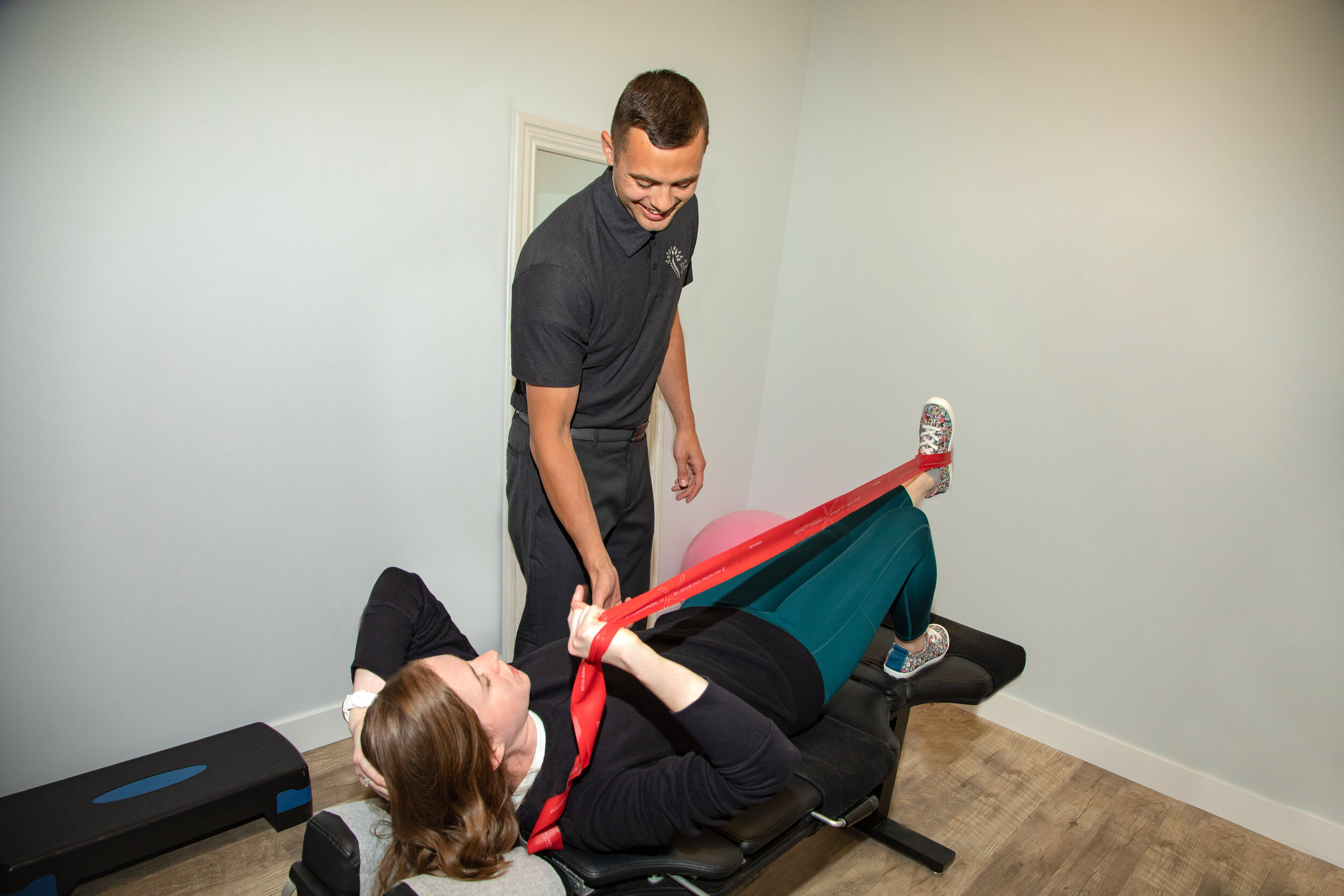What & How We Treat
What We Treat
We help patients seeking relief for a variety of medical diagnoses and symptomatic presentations including:
+ Back Pain
Back pain is the most frequent complaint we encounter. It is the leading cause of work absence and activity limitation around the world. Missed days of work impose high economic burdens on individuals, families, and communities. Most treatment focuses on just blocking the pain, ignoring the root cause. The pain we feel is the body's alert for a change. Learn More Here
+ Neck Pain
Imagine holding an 11 pound bowling ball at arms length for an extended period of time. Now imagine holding the ball close to your chest. Which one requires more demand? This reflects the work imposed on our neck from our head position. Improper position of the neck causes muscle and joint pain. Additionally, your neck is rich in nerves, and dysfunction may lead symptoms to travel into your shoulders, arms, hands and head. Neck pain is an alert for change. [Learn More Here]4
+ Headache Relief
According to the World Health Organization, 50 to 75% of people have had a headache in the last year. Headaches present in many different fashions, but all negatively impact a normal lifestyle. Common causes include stress, muscular tightness, nerve irritation and vascular issues. Headaches impact mood, escalate irritability and can be debilitating. Headaches are not normal, and are an alert for a change. Learn More Here
+ Shoulder Pain
Shoulder pain is frequently mechanical, meaning it is related and caused by how our body moves and transmits force through it. Mechanical pain is confirmed if movement can impact the presentation. While many problems can originate within the shoulder, many shoulder conditions can arise from the neck or mid back. Learn More Here
+ Sciatica
Sciatica is a common description of pain, tingling, numbness or weakness that extends down the patient's leg. The specific nature of the traveling symptoms alerts us of the structure responsible, and we respond with the best care that research has found for treatment. Frequently, the cause of sciatica is found within the low back, and is frequently treated by chiropractors. Learn More Here
+ Knee Pain
Knee pain is increasingly common amongst aging individuals. Knee pain drastically impacts our quality of life, and many current treatments don't reveal the root cause. According to Cleveland Clinic, over 90% of total knee replacements must be replaced after 10 years. Uncovering the root of why the knee wears down is imperative to keep you moving and functioning at your peak level. Learn More Here
+Other Conditions
- Adhesive capsulitis
- Arthrtisis
- Bulging disc
- Carpal tunnel syndrome
- Degenerative disc disease
- Degenerative joint disease
- Difficulty walking
- Disc herniation
- Disc injuries
- Failed back surgery
- Frozen shoulder
- Golfer's/tennis elbow
- Hip pain
- Iliotibial band (IT) syndrome
- Impingement syndromes
- Jaw pain
- Joint pain
- Lateral/medial epicondylitis
- Muscle strain/sprain
- Overuse injuries
- Pinched nerves
- Piriformis syndrome
- Plantar fasciitis
- Post-surgical back pain
- Radiulopathy
- Regional pain syndrome
- Rotator cuff syndrome
- Sacroiliitis
- Shin splints
- Soft tissue adhesions
- Spinal stenosis
- Torticollis
How We Treat
Depending on your condition, we may offer any combination of the following innovative treatments to help you achieve relief and recovery as quickly as possible:
+ Joint Manipulation
Adjustments are used to restore motion to restricted joints in the body. It is the most common and impactful treatments used by chiropractors. Many joints are restricted due to mechanical overload, causing dysfunction that can later create accelerated degeneration.
Proper movement of joints allows our spine to function for all of our daily activities and performance demands. Restoring motion and function also aid in the overall health of your spine. In addition, they have a drastic impact upon your nervous system which coordinates the function of your entire body.
For those patients that are concerned over the force of an adjustment, we also offer gentle and alternative approaches to the joints to help restore movement and function. This is a low-velocity manual technique that does not provide the audible release (cracking/popping sound).
+ McKenzie Mechanical Diagnosis and Therapy
MDT is an assessment to define movement difficulties and coordinating appropriate treatment. It is particularly useful for conditions such as low back pain, neck pain, disc issues, radiation, numbness, and sciatica.
This method provides great feedback to train you in managing your condition outside of our office. It is directed toward a self-treatment method, therefore making teh patient less reliant upon the doctor.
McKenzie's work shows a 90% success rate if the clinician can alter the symptoms during the examination.
+ Functional Rehabilitation & Performance
Chiropractic functional rehabilitation consists of a variety of exercises and movements with the goal of improving function in your everyday life. Each patient undergoes a movement screen, and their care is tailored to their individual needs.
Dr. deBuhr utilizes SFMA principles outlined by Dr. Gray Cook.
The SFMA breaks down movements to find the particular muscle that isn't working properly. When one member of a team doesn't work, others are responsible for picking up the slack, causing them to become overworked.
This causes undue tension upon the nerves and structures impacted from the abnormal force. Corrective exercises are designed to stimulate the dysfunctional muscle(s) in functional patterns, which translates to more efficient movement in sport and everyday activities; thus, increasing performance while decreasing the risk for injury.
Functional rehabilitation frequently follows a pathway of global mobility, focused mobility, soft tissue flexibility, stability and patterning, loading, and functional movement.
+ Dynamic Neuromuscular Stabilization (DNS)
DNS comes from the work of two Czechoslovakian doctors, Drs. Vojta and Kolar, a neurologist and a physical therapist, respectively. Together, they set out to treat children with cerebral palsy. Over time, they've grown to expand the technique to people of all ages, make it more dynamic, and to yield faster results.
The purpose of DNS is to promote proper activation and coordination of the muscular and neurological systems. This has yielded success for mechanical dysfunction and for neurological conditions such as cerebral palsy, scoliosis, and stroke cases.
+ Soft Tissue
Myofascial Release
Soft tissue pin and stretch techniques are various movement-based manual therapy methods to treat tight muscles, ligaments, tendons, and/or fascia that do not function properly.
It involves active participation from patients while the doctor applies pressure to remove adhesions within the affected area.
Frequently, soft tissue adhesions can be found in areas that are affected by repetitive overuse injuries. Clinically, this technique can be effective at improving posture, and in treating conditions such as impingement syndrome of the shoulder or hip, IT band syndrome, carpal tunnel syndrome, elbow dysfunctions, headaches, and spinal pain.
Instrument Assisted Soft Tissue Mobilization (IASTM)
IASTM is a manual therapy technique where the doctor utilizes a contoured instrument to address myofascial dysfunctions.
The tool magnifies adhesions found in muscles, ligaments, tendons and fascia, making it easier for the doctor to detect and remove. The instrument also removes adhesions with less friction than the hands.
The tool breaks down the tissue, increasing blood flow and promoting remodeling of the soft tissue. This reduces treatment time and allows for a faster recovery.
+ Modalities
Electric Stimulation
Electric stimulation is a treatment method where pads are hooked up to a patient and small electricity is passed between them, over an affected area. The electric wavelengths are set to calm down nerves that are over-firing, quickly reducing pain in the affected area.
Ultrasound
Ultrasound therapy is a method to pass heat into deep tissues within the body. Deep heating tendons, muscles or ligaments increases circulation to those areas, which aids in the healing process. The heat also allows the muscles to relax, increasing range of motion in the affected area.





















